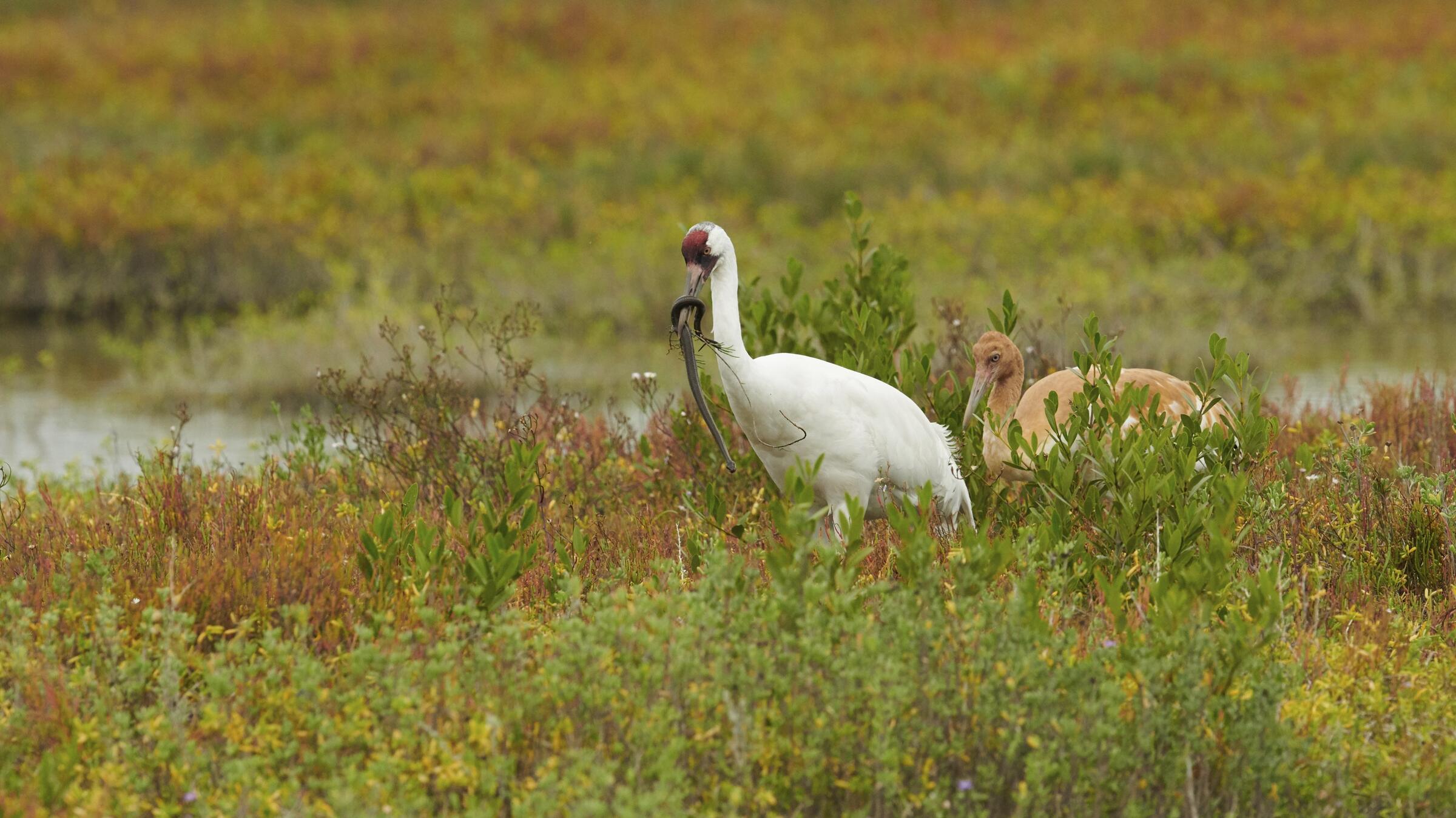By Dr. Richard Gibbons, Director of Conservation, Audubon Texas
Conservation is a complex endeavor. Since the beginning of the conservation movement, myriad organizations have formed and adapted to fill the many niches that successful conservation requires. Like nature, with rich and diverse ecosystems full of species tuned to the ebb and flow of seasons, tides, or disturbance, so too the community of conservationists is filled with various dedicated groups, specialists, and generalists to move the work forward.
The Whooping Crane Conservation Tool is a good lens through which to see the work of several organizations and individuals all working toward the common goal of conserving the best habitat for the growing population of wild Whooping Cranes. Audubon Texas led the decision-support tool development, seeing the need to maximize conservation value for limited funds. The tool is a combination of habitat layers, sea-level rise models, property information, and Whooping Crane location data to predict which parcels of land are the highest priorities to conserve Whooping Crane habitat for the recovering population of Whooping Cranes, now at just over 500 individuals, but still the rarest and most imperiled crane in the world.
The Tool was developed with input from a host of partners. The International Crane Foundation and US Fish and Wildlife Service are the species experts that provided the key ecological envelope for the cranes. These organizations are responsible for monitoring the population and locations of the wild Aransas-Wood Buffalo Whooping Crane population. Texas Parks and Wildlife Department assembled incredibly informative and precise geographic data layers filled with plant, animal, and other environmental variables. Local land trust partners provided us with the status of properties in various stages of being protected in the Matagorda Bay project area. The tool designers at Siglo Group facilitated the input from all the groups and pulled it together in a way that was understandable and intuitive.
Critically important, passionate and strategic donors supported the vision, thus providing the means to bring this ecosystem of conservation practitioners together to create a tool that is helping direct limited funds to the most important remaining lands that will help Whooping Cranes and so many more coastal species remain as a testament to our shared natural heritage.





